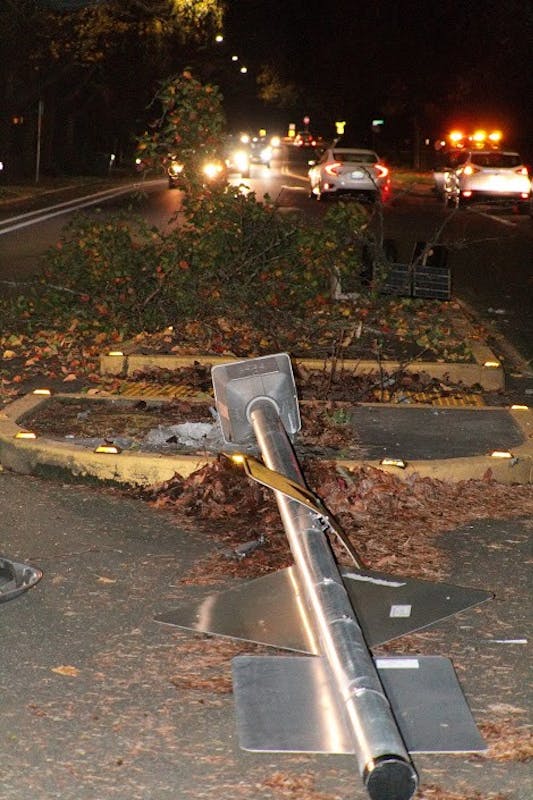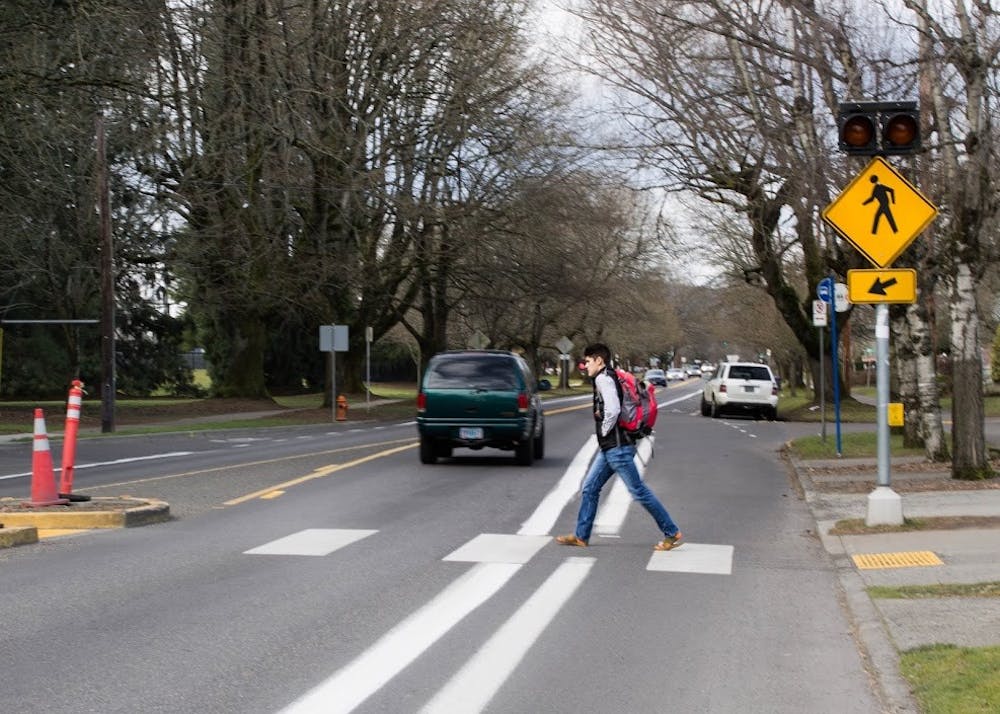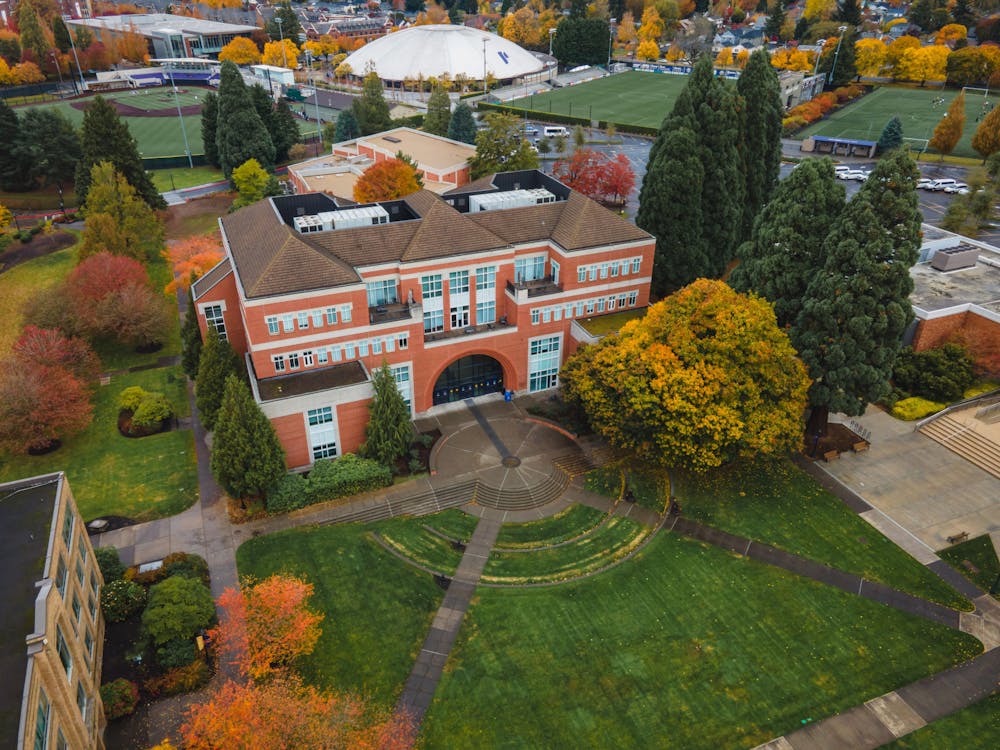The flashing lights in the center median of the crosswalk in front of the main entrance to the University of Portland, which were destroyed after a DUII car crash in November, have yet to be replaced by the Portland Bureau of Transportation (PBOT).
Because the crosswalk traverses a city street, it is PBOT's responsibility to repair the damages, but the bureau previously told University Operations Special Projects Manager Jim Kuffner it had no plans to work on the site until March.
However, when a student was hit last Wednesday night at the crosswalk by a car going south on Willamette Blvd., the city agreed to look more closely into installing additional lighting on the east side of Willamette in front of the main entrance. While the timeline for the work hasn't changed much, Kuffner says he now has a clearer idea of when the work will get done and what it will entail.
“News of this incident nearly broke my heart as this was the greatest fear we had while awaiting action from PBOT on our request,” Kuffner said in an email to PBOT traffic engineer Scott Batson on Feb. 2, the morning after the incident. “It is very dark at the crosswalk site at night — especially in the rain — and many drivers have difficulty seeing pedestrians. Please, now give this request your highest priority.”
As of right now, there are flashing systems and traffic signs installed at curbs on either side of the crossing, but the lights, sign and a tree in the center median were taken out in the November collision.
Kuffner said the city has plans to replace the flashing system in one of two ways. Traffic engineers will either add an additional flashing bar to the existing poles located on both curbs, or replace the bulbs in the existing flashing systems with rectangular rapid flashing beacons — brighter LED lights with an irregular flash pattern similar to emergency flashers on police vehicles.
Kuffner said he was assured by PBOT official Tod Rosinbum that the bureau would get these improvements up and running within the next 4-6 weeks or sooner.
However, according to Kuffner, it is unlikely that the city will replace the flashing system that previously stood in the center of the crosswalk.
In an email exchange on Nov. 21, the day after the initial accident that knocked out the median, Batson warned Kuffner that there would be a delay of about 16 weeks in his request for the city to repair the site due to a high volume of requests to the bureau.
Kuffner emailed again to check the status of the repair on Jan. 20 and received a response from Batson telling the University to wait its turn.
“The signal engineer has been reviewing the location, but the service request has not been picked up yet by a traffic engineer for investigation,” Batson said in an email to Kuffner on Jan. 20. “There are about 293 open service requests and yours is at about 178 in line.”

While waiting for the city to take action, Vice President of University Operations Jim Ravelli said the University is making its own moves to increase the safety of the crosswalk.
“We’re putting up our own signage to try and help with this,” Ravelli said. “Our hope was that the city was going to get this addressed much quicker than they have. But right now, we need to do something.”
Kuffner said work is already underway to install new pedestrian crosswalk signs in the median strip and at both curbs.
UP will also install two new light fixtures on the west side of Willamette that will shine directly on the crosswalk from above. One light will illuminate the crosswalk and the other will provide additional lighting for the #44 bus stop and bus shelter area.
In addition, the University will also be increasing the wattage on the two existing light poles located closest to the sidewalk at the main entrance to provide better lighting on the sidewalk areas.
While improvements on the University’s end are underway, Ravelli says he’s frustrated that the city has yet to address the issue.
“We view this as a really high priority and the city did not view it as high of a priority as we wanted them to, so essentially what they told us was that we were well down in the queue, that there were other things they needed to take care of and you needed to wait your turn,” Ravelli said. “That wasn’t a very satisfying response.”








